How back-to-back hurricanes set off a year of compounding disasters for one city − and alarm bells a
A National Academies report finds crucial lessons for everyone’s disaster planning and recovery in a town hit hard by two hurricanes, downpours and deep freezes, all in the midst of a pandemic.
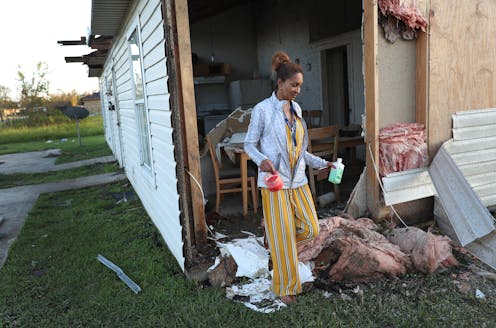
Most Americans will remember 2020 as the year when the pandemic changed everything. But for Lake Charles, Louisiana, and its neighbors along the Gulf Coast, it was also the year of record-setting disasters, when “once-in-a-lifetime” storms hit in such rapid succession that their impacts blurred together.
A recent National Academies consensus study I worked on looked into the compounding disasters that the region faced – both physical and socioeconomic – as storm after storm arrived during the pandemic with little time for recovery.
It concludes that Lake Charles’ experiences could be a harbinger of what’s to come in a warming world unless the nation fundamentally rethinks its disaster preparedness, response and recovery strategies.
Lake Charles’ compounding disasters
Hurricane Laura made landfall near Lake Charles on Aug. 27, 2020, as a powerful Category 4 storm, with wind speeds exceeding those that local building codes were designed to protect against. The ongoing pandemic made filing FEMA assistance requests and insurance claims more difficult. Assessors could view properties only from afar, and on-site application assistance was suspended, forcing residents into untested online systems.
As the community struggled to self-document its losses, Lake Charles was struck again five weeks later by Hurricane Delta. The storm lashed already crippled buildings and sent debris flying, causing further damage and creating complex claims scenarios.
It was nearly impossible to differentiate new damage from existing damage worsened by the latest storm. Delayed recovery assistance left municipalities with no funds to pay for more debris removal.
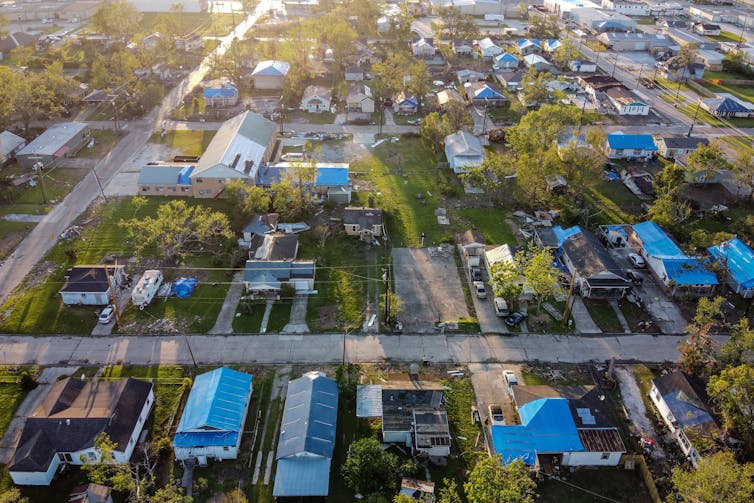
Then, February 2021 brought a deep freeze to still-unrepaired homes, bursting pipes and adding more water damage from within. Tarps protecting damaged roofs frayed, allowing even more water in from above. Debris continued to mount along the streets.
When record rainfall arrived in May 2021, debris-clogged stormwater systems were overwhelmed. Floodwaters inundated properties, pushing yet another round of losses into an already overwhelmed claims and assistance system. Uninsured losses mounted as flooding reached areas not expected to flood under “normal” circumstances and thus not required to carry flood insurance.
This is what a compounding disaster looks like. The growing economic toll left many homes unrepaired. Damaged rental properties were quickly absorbed by buyout programs or flipped in suddenly lucrative housing markets. Housing recovery in Lake Charles lags to this day.
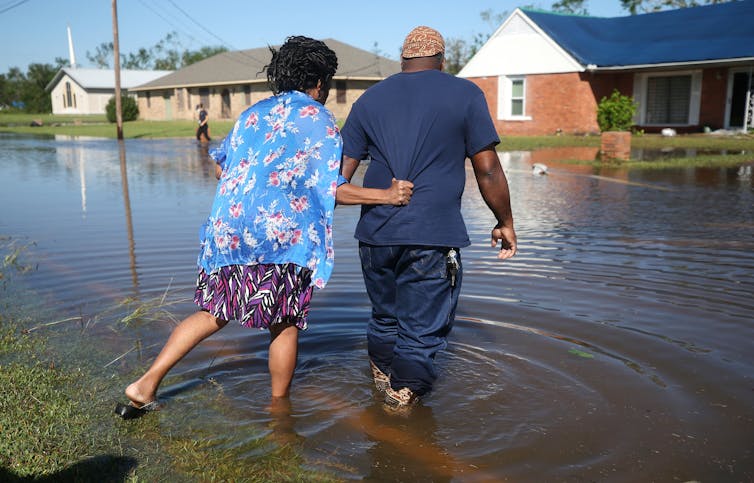
What happened in Lake Charles in 2020-21 illustrates an important truth: Compounding disasters are avoided only by reducing the recovery time after each storm.
That’s a challenging prospect with storms striking more frequently due to climate change. As the study team’s resident engineer, I believe it will require prioritizing housing resilience, creating more flexible assistance systems and building adaptive capacity that can contend with novel storm scenarios.
1. Build resilient homes
The best way to reduce recovery time is to eliminate the need to recover at all. That begins with building homes that are able to withstand extreme storms.
Unlike other critical infrastructure that is strictly regulated, most housing is governed by the private decisions of property owners who receive very little information regarding the vulnerability of their homes. It is thus unsurprising that they do not realize how breaches of a window or garage door could propagate to destroy their home.
Worse yet, aging existing properties are not required to comply with the latest building codes, making the nation’s aging housing inventory particularly vulnerable to compounding disasters.
States could adopt and enforce enhanced construction standards, but political will is lacking in many Gulf Coast states. Beyond developer concerns over rising construction costs, code reform can become politicized.
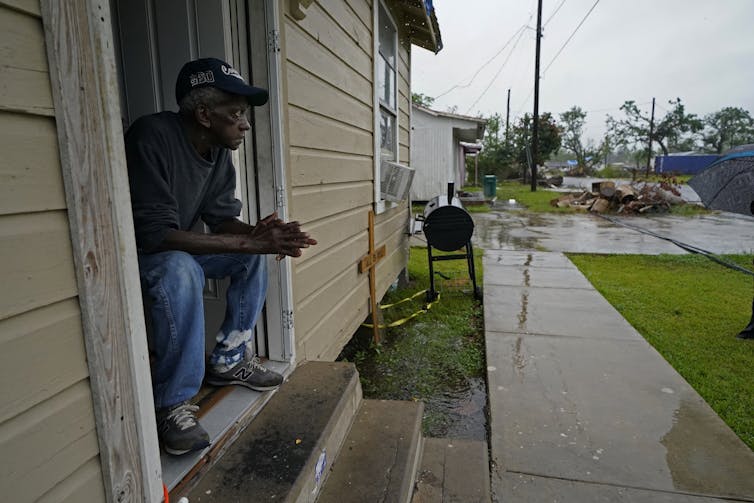

One example is Alabama, which does not enforce a statewide building code. Jurisdictions in Mobile and Baldwin counties elected to enforce the Coastal Construction Code Supplement, created after hurricanes Ivan (2004) and Katrina (2005) to strengthens houses beyond typical code minimums. This, along with the Strengthen Alabama Homes grant program, led to more homes being built to a higher standard along the Alabama coast. Many of those homes were unscathed when Hurricane Sally hit in 2020.
These local programs offer a template that can be replicated in states such as Louisiana, which is similarly emphasizing resilient affordable housing as part of its build-back-better strategy.
2. Recognize that 1 size no longer fits all
Housing recovery in Lake Charles was particularly impeded by the rigidity of the nation’s current disaster assistance apparatus, which views each disaster as a discrete event, managed by a standardized and at times restrictive process. That resulted in significant delays and denials of assistance during the compounding disasters of 2020 and 2021.
In sharp contrast, pandemic relief funds arrived in these communities in the same time period with few restrictions, giving municipalities the flexibility to address acute needs and even bolster long-term resilience. Communities used the funds to provide emergency rental and utility assistance, harden vulnerable infrastructure and improve flood management capacity.
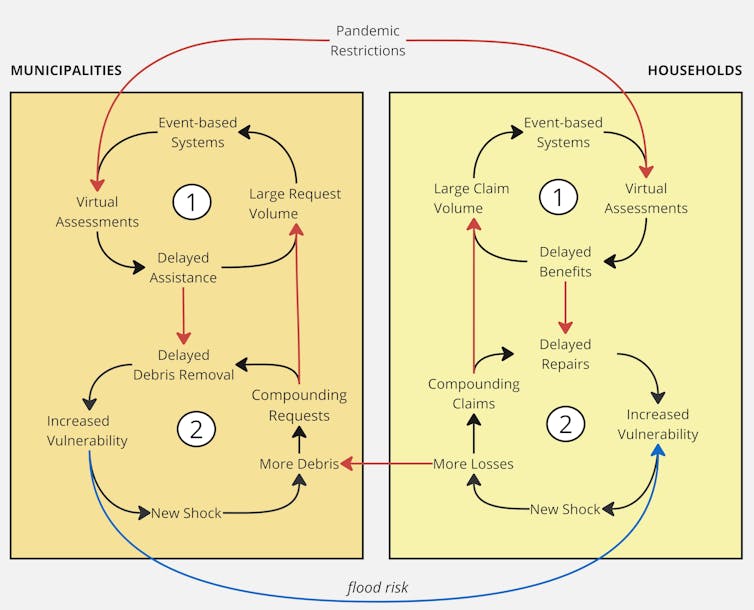
The 2020-21 storm sequence bankrupted a dozen Louisiana insurers and left the national disaster fund depleted. The federal government now has an opportunity to redesign national assistance systems to transition from a historically rigid, event-based view of disasters toward a more flexible perspective that more fully accommodates the varied and prolonged effects of compounding disasters based on each community’s needs and capacity.
Disasters today are compounding in ways unimagined when the Stafford Disaster Relief and Emergency Assistance Act was written 35 years ago. It established how the federal government, and specifically FEMA, assists states and local governments in preparing for and recovering from disasters. Overhauling the law could bring an important reset to national disaster assistance policies.
3. Learn from the pandemic
Beyond speeding recovery through flexible funding, the pandemic forced communities to develop new capacity to adapt to crises, likely helping them respond to compounding disasters that would follow.
The COVID-19 crisis spurred improved data collection and reporting capabilities. We found that it also enhanced coordination within and across organizations.
And it forced virtual service delivery – schools developed online learning systems, and physicians popularized telehealth. Those new technologies were already in use in Lake Charles when storm damage shuttered schools, one day after the first in-person classes since the pandemic. It is unlikely that such swift adaptation would have occurred without months of a pandemic building that adaptive muscle.
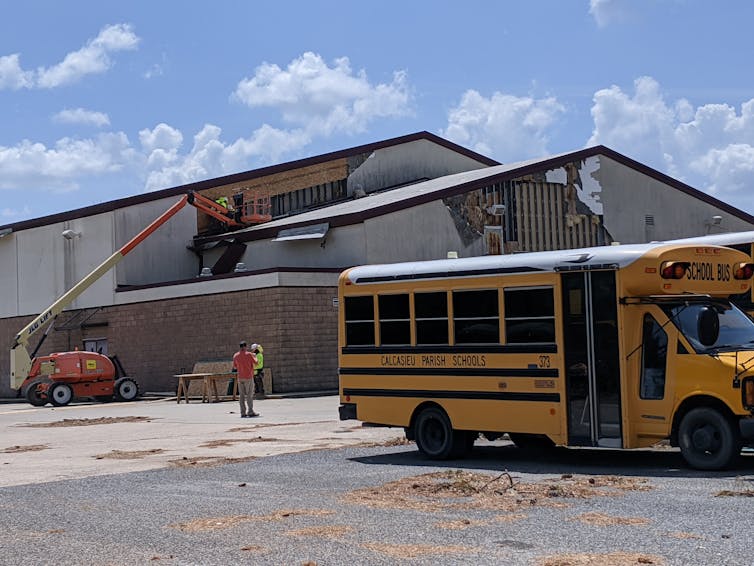
Climate change will bring new weather patterns that are beyond emergency managers’ current playbooks, which are filled with protocols honed by past experience. The capacity to adapt will be essential when those playbooks can’t handle compounding disasters that few had imagined.
Tracy Kijewski-Correa receives funding from the US National Science Foundation.
Read These Next
What’s at stake in Trump’s executive order aiming to curb state-level AI regulation
In the absence of comprehensive federal AI regulation, states have stepped in. The Trump administration,…
The Bible says little about Jesus’ childhood – but that didn’t stop medieval Christians from enjoyin
Legends about Jesus’ early years that circulated in medieval Europe often drew on apocryphal texts.
Data centers need electricity fast, but utilities need years to build power plants – who should pay?
How many data centers will be built – and how much electricity they’ll need – is uncertain. Being…





